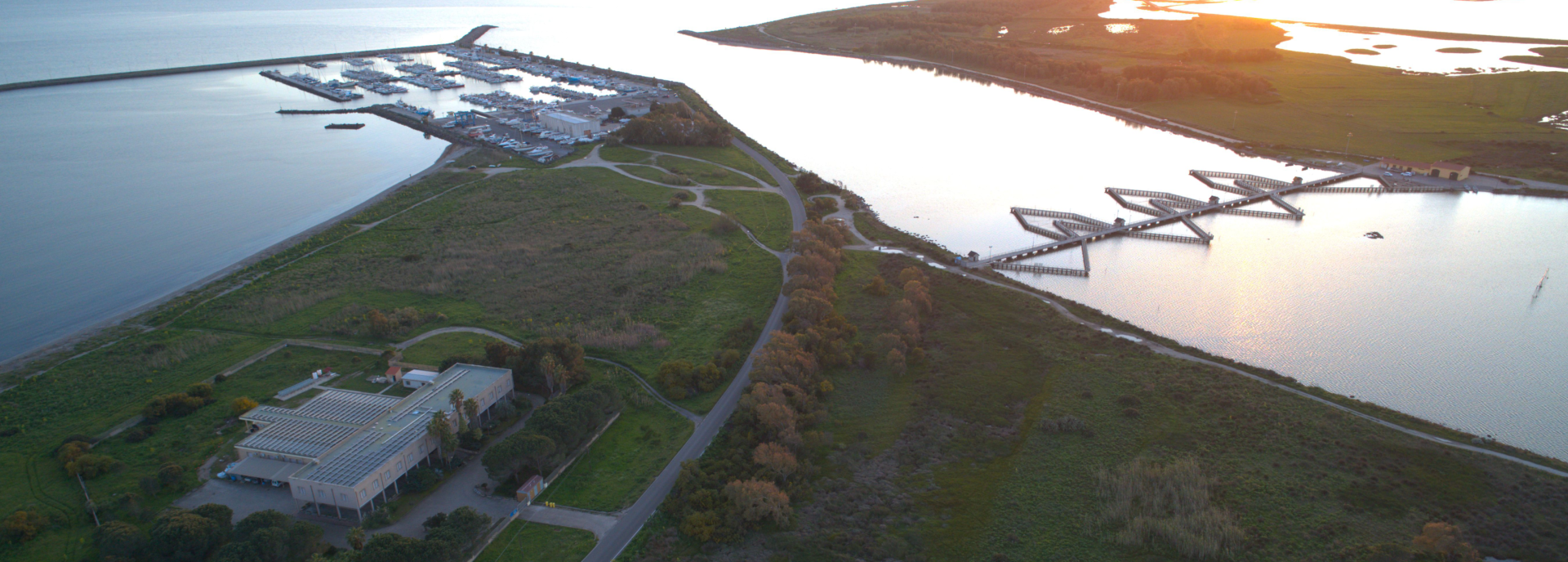Protected areas – e.g. Marine Protected Areas (MPAs) or Sites of Community Importance (SCI) – are clearly defined geographical spaces that are managed in order to protect in the long term the characteristics of the habitats and species and of ecosystem services and related cultural services.
The “Marine Ecology and Conservation” research team focuses its research activities on the assessment of the efficiency of protected areas as tools for the sustainable use of biological resources and for the conservation of coastal habitats. In particular, the team’s research activities deal with the quantification of human impacts on biological resources due to the exploitation of commercial species (professional and recreational fishing) and to the use of coastal habitats (e.g. tourism, diving, boating). The findings of these research activities provide a useful support to local and national administrators for the sustainable governance of the environment.
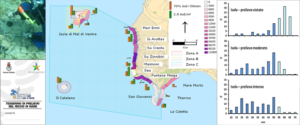 |
| Sustainable management of edible sea urchin (Paracentrotus lividus) fishery in the “Penisola del Sinis – Isola di Mal di Ventre” MPA. The map at the centre of the figure shows density data from monitoring activities (orange and green bars) combined with fisherman’s stated fish catches (purple gradations) derived from the analysis of fishery licenses’ personal logbooks. On the right side of the figure, the histograms show the effect of human exploitation on the biggest sea urchin’s size classes (> 50 mm). |
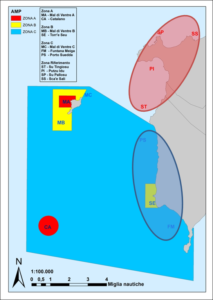 |
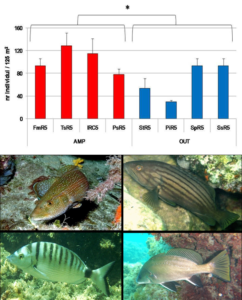 |
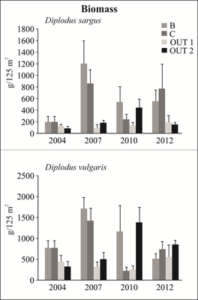 |
| Efficiency of protection measures in the “Penisola del Sinis – Isola di Mal di Ventre” on fish fauna. On the left side, the map shows the sites used for the assessment of the “reserve effect”- the survey activities were conducted in areas with the same geologic and geographic features. Histograms show that the “reserve effect” on fish fauna is strongly variable among years. | ||
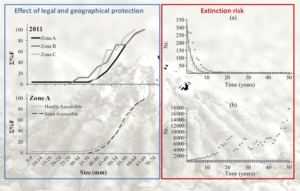 |
| Patella ferruginea: on the left side, size/cumulative frequency graphs show that illegal harvesting has significant effects on the population structure (note that the pattern depends both on MPA zonation and on the degree of accessibility from the coast). On the right side, results from population viability analysis are reported: a) real data scenario, b) no harvesting mortality scenario. |
